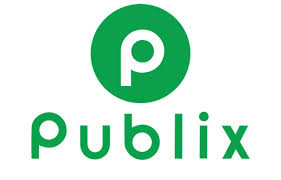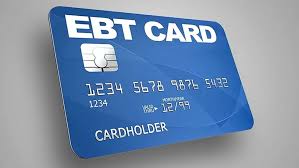Why Doesn’t Publix Show Prices
Why doesn’t publix show prices? When you enter a Publix store, you may notice that the prices of items are not listed on the shelves.
This is because Publix uses a system called “variable pricing,” which means that prices can change frequently based on a variety of factors.
In this article, we will explore why Publix doesn’t show prices, and what this means for shoppers.
We will also discuss the pros and cons of variable pricing, and whether or not it is a good thing for consumers.
What Is Variable Pricing?
Variable pricing is a strategy where the price of a product or service fluctuates based on various factors, such as:
- Demand: When demand is high, businesses can charge more. Conversely, when demand is low, they may need to lower prices to attract customers.
- Supply: If there is a limited supply of a product, businesses can charge more. On the other hand, if there is an excess of supply, they may need to reduce prices to sell everything.
- Time: Prices can change based on the time of day, week, month, or season. For example, hotels often charge more for rooms on weekends and during peak season.
- Customer: In some cases, businesses may charge different prices to different customers based on their perceived willingness to pay. This is often seen in negotiated sales or with loyalty programs.
Variable pricing can be a complex strategy, but it can be an effective way for businesses to maximize their profits and respond to changing market conditions.
Does Publix Show Prices On All Their Products?
Publix generally shows prices on all their goods in-store, but there are some exceptions:
- Items not currently on sale: Prices are not displayed online for items that are not currently on sale. However, you can still find them in the store and check the price tag.
- Items available for special order: Prices are also not displayed online for items that are available for special order. You will need to call your local Publix store to inquire about the price.
- Publix Quick Picks: This is an expedited delivery service through Instacart. Prices for items ordered through Publix Quick Picks are generally higher than the prices in physical stores.
- Delivery and curbside pickup: Prices for items ordered through Publix delivery and curbside pickup are the same as the prices in physical stores, but additional fees may apply.
Why Doesn’t Publix Show Prices On Shelves?

Publix actually does show prices on shelves for most items, though it’s true they use a different system than some other grocery stores. Here’s what you need to know:
1. Publix uses electronic shelf labels (ESLs): These small digital displays show the price directly next to the product. This allows them to update pricing quickly and efficiently, which can be helpful for managing promotions and sales.
2. Not all items have ESLs: Some products, like produce and bulk items, might not have individual price labels. These prices are typically displayed on larger signs nearby.
3. You can check the price at the scanner: If you’re unsure about the price of an item, you can always scan it at the self-checkout or have a cashier scan it.
There’s also the Publix Promise: If the scanned price is higher than the shelf price or advertised price (excluding alcohol and tobacco), you get the item for free.
So, while Publix doesn’t use traditional paper price tags for all items, they do have ways to ensure you know the price before you buy.
Pros And Cons Of Variable Pricing?
Pros:
- Increased profits: Businesses can maximize their profits by charging more during peak demand periods and less during off-seasons. This can help them weather economic downturns and reinvest in growth.
- Improved resource allocation: Variable pricing can incentivize customers to use resources during less busy times, leading to smoother operations and reduced strain on infrastructure.
- Reduced inventory waste: By offering lower prices for older or less popular items, businesses can clear out inventory more efficiently, freeing up space and capital.
- Greater customer segmentation: Variable pricing allows businesses to cater to different customer segments with different price sensitivity and willingness to pay.
- Dynamic market response: In fast-changing markets, variable pricing can help businesses adapt quickly to fluctuations in demand and supply.
Cons:
- Customer perception: Variable pricing can be seen as unfair or confusing by customers, especially if not implemented transparently. This can damage brand reputation and loyalty.
- Algorithmic bias: If not carefully designed, pricing algorithms can perpetuate or amplify existing biases, leading to discriminatory outcomes.
- Price volatility: Frequent and unpredictable price changes can deter customers and make it difficult for them to budget.
- Implementation complexity: Setting up and managing effective variable pricing systems requires significant data analysis, complex algorithms, and ongoing monitoring.
- Legal and regulatory hurdles: Variable pricing may raise legal and regulatory concerns, especially in industries with price discrimination regulations.
Ultimately, the success of variable pricing depends on careful planning, transparent communication, and ethical implementation.
Businesses need to weigh the potential benefits against the risks and ensure their approach aligns with their brand values and customer expectations.
Reasons Why Some Items Might Not Have Price Tags in-store?

You’re right, it’s unusual for Publix to have items without price tags in-store. While it’s not a common occurrence, there are a few potential reasons why you might encounter this:
1. Temporary stocking error: The most likely explanation is a simple stocking error. Items might be misplaced, recently added, or awaiting restocking. In this case, the price tag could be missing temporarily until an employee restocks and reattaches it.
2. New or promotional items: Sometimes, new or promotional items might arrive without pre-printed price tags. The store staff might be waiting for updated pricing information or attaching tags manually. Look for signage around the item or ask an employee for clarification.
3. Weighing or self-checkout items: Certain items like produce or deli meats are weighed at the point of purchase, so they might not have individual price tags. The final price will be determined based on weight and displayed on the scale or self-checkout screen.
4. Technical issues: In rare cases, there might be technical issues with the system generating or printing price tags. This could affect a specific shelf or section of the store. Look for signs explaining the issue or speak to a manager for assistance.
5. Damaged or lost tag: Occasionally, price tags might get damaged or fall off during stocking or customer browsing. If you notice an item without a tag, it’s best to alert a store employee so they can replace it.
What to do if you encounter an item without a price tag:
- Don’t assume the item is free!
- Politely ask a nearby employee for assistance. They can look up the price or direct you to the appropriate department for clarification.
- You can also use the Publix app to scan the item’s barcode and see if the price is displayed there.
By understanding the potential reasons and taking appropriate action, you can ensure a smooth and accurate shopping experience at Publix, even if you encounter an item without a price tag.



